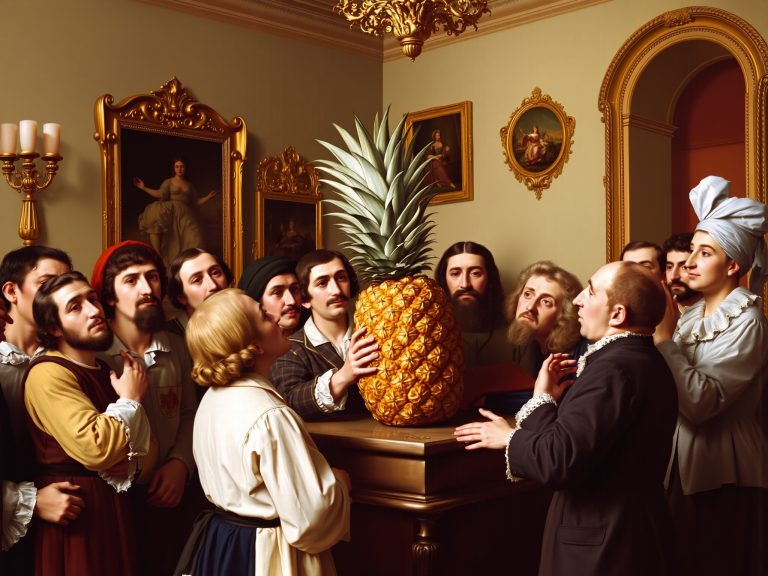In Orléans fair, where battles did rage,
A maiden emerged, both warrior and sage.
Joan of Arc, with her valorous might,
Brought a new dawn from the darkness of night.
Yet tales oft untold, beyond spear and sword,
Speak of her craft in a world she adored.
“La Maison de Jeanne,” her boutique of dreams,
Where armor met fashion in shimmering seams.
Chainmail and silk, in harmony fused,
Leather with lace, none could refuse.
Helmets adorned with plumes of bright hue,
A blend of the bold and the beautifully true.
Noblewomen came, seeking her art,
For gowns that could shield both body and heart.
Knights too admired her delicate skill,
For elegance paired with the strength of their will.
Each piece bespoke, with care wrought and spun,
A testament to what courage had won.
In battle or court, her garments proclaimed,
The power and grace her legend had named.
Her shop was a haven where strength met grace,
In every garment, her spirit had place.
Empowered were those who wore her design,
For Joan’s legacy, both fierce and divine.
And so, in the annals where legends reside,
The ballad of Joan and her fashion abide.
A blend of the might and the beauty she wore,
A tale of a warrior, remembered evermore.
Actual knowledge about the theme
Here are four key facts about Joan of Arc:
-
Early Life and Divine Mission: Born around 1412 in Domrémy, France, Joan of Arc began hearing voices at the age of 13, which she believed were sent by God to guide her mission to save France from English domination. These voices, which she attributed to saints like Michael, Catherine, and Margaret, inspired her to lead the French army to several significant victories during the Hundred Years’ War (The HISTORY Channel) (Wikipedia).
-
Military Achievements: Joan is most famous for her role in the Siege of Orléans in 1429, where she led French forces to a pivotal victory. Her leadership and presence were crucial in lifting the siege, which was a turning point in the war. Following this, she played a key role in the Loire Campaign, which led to the coronation of Charles VII at Reims, solidifying her status as a national heroine (Encyclopedia Britannica) (World History Encyclopedia).
-
Capture and Trial: In 1430, Joan was captured by the Burgundians, allies of the English, and handed over to the English forces. She was tried for heresy and witchcraft by an ecclesiastical court in Rouen. Despite a farcical trial process, she was convicted primarily for wearing men’s clothing and her claims of divine guidance, leading to her execution by burning at the stake on May 30, 1431 (The HISTORY Channel) (The HISTORY Channel).
-
Legacy and Sainthood: After her death, Joan’s legacy continued to grow. She was posthumously retried in 1456, where she was declared innocent and a martyr. Joan was beatified in 1909 and canonized as a saint in 1920 by the Catholic Church. She remains a symbol of courage and faith, and a patron saint of France (Encyclopedia Britannica) (World History Encyclopedia).
For more detailed information, you can visit Britannica and HISTORY.




